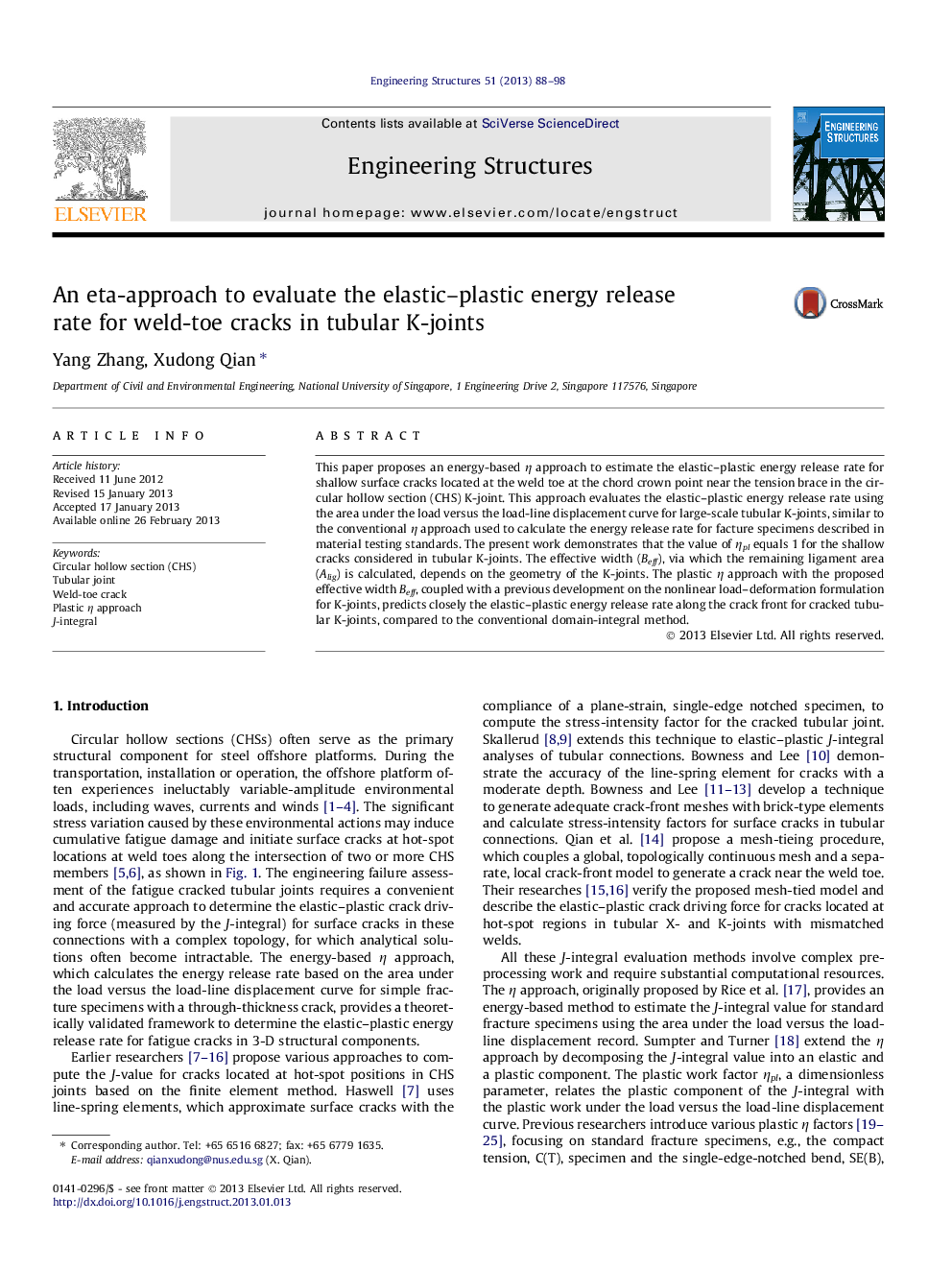| Article ID | Journal | Published Year | Pages | File Type |
|---|---|---|---|---|
| 267000 | Engineering Structures | 2013 | 11 Pages |
This paper proposes an energy-based η approach to estimate the elastic–plastic energy release rate for shallow surface cracks located at the weld toe at the chord crown point near the tension brace in the circular hollow section (CHS) K-joint. This approach evaluates the elastic–plastic energy release rate using the area under the load versus the load-line displacement curve for large-scale tubular K-joints, similar to the conventional η approach used to calculate the energy release rate for facture specimens described in material testing standards. The present work demonstrates that the value of ηpl equals 1 for the shallow cracks considered in tubular K-joints. The effective width (Beff), via which the remaining ligament area (Alig) is calculated, depends on the geometry of the K-joints. The plastic η approach with the proposed effective width Beff, coupled with a previous development on the nonlinear load–deformation formulation for K-joints, predicts closely the elastic–plastic energy release rate along the crack front for cracked tubular K-joints, compared to the conventional domain-integral method.
► We propose an approach to estimate elastic–plastic J values for cracks in tubular K-joints. ► This approach estimates J-values solely from the area under the load versus displacement curve. ► This approach eliminates the need for a detailed numerical analysis to calculate the J-values.
